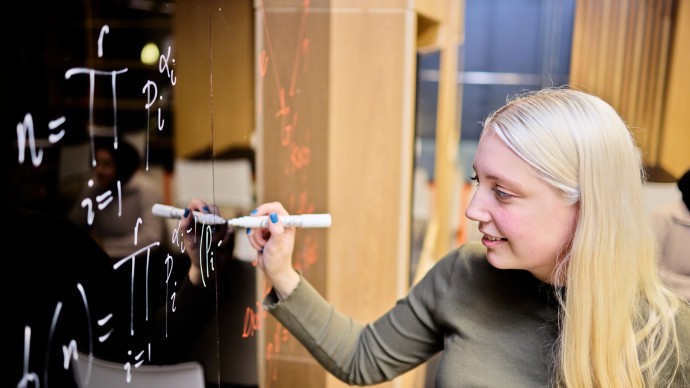Peer assessment
What is peer assessment?
Peer assessment engages students in the evaluation of the work of their peers and can include peer feedback and review. This is one aspect of partnership learning, a practice involving students in co-designing learning and teaching. In recent years, this has become a common feature of the design and delivery of learning and teaching in Higher Education.
Why is it used?
Peer assessment allows students to experience the role of assessor and offers a broader appreciation of the assessment process. This participatory approach can support greater agency in learning and foster enhanced ‘assessment literacy’ (Deeley and Bovill, 2017).
What are the benefits?
The process can help students move away from simply considering the measurement of performance and can encourage active learning to support ‘assessment for learning’, promoting skills such as reflection and critical thinking.
In addition, the process can also help to identify key components in marking criteria and offer insight into the marking process, helping students to develop their ‘assessment literacy’ (Smith, 2013).
Research from Deeley and Bovil (2017) further supports this idea, suggesting peer feedback provides opportunities for students to develop and enhance their capacity to judge their own work by learning how to use the tools by which judgement on their assessed work is made (Deeley and Bovill, 2017).
Who benefits from peer assessment?
Peer assessment can benefit students at all levels and support individual and group work activities across a range of practices. It can be used in both formative and summative assessment practices.
How you might use peer assessment
- Providing feedback on blog posts on Moodle forums.
- Using marking criteria to assess ‘fictional’ assessments in pairs.
- Peer-reviewing indicative bibliographies.
- Peer reviewing ethics applications.
- Providing feedback on assessed presentations.
Further resources
Staff student partnership in assessment: enhancing assessment literacy through democratic practices
This paper argues that a partnership approach, designed to democratise the assessment process, not only offers students greater agency in their own and their peers’ learning, but also helps students to enhance their assessment literacy.
Deeley, S. J. and Bovill, C. (2017) Staff student partnership in assessment: enhancing assessment literacy through democratic practices. Assessment and Evaluation in Higher Education, 42(3), pp. 463-477. (doi:10.1080/02602938.2015.1126551)
Assessment literacy and student learning: the case for explicitly developing students’ ‘assessment literacy’
This paper reports on a study to quantify the impact on student learning and on student assessment literacy of a brief assessment literacy intervention.
Smith, C.D., K. Worsfold, L. Davies, R. Fisher, and R. McPhail. (2013) Assessment literacy and student learning: the case for explicitly developing students’ ‘assessment literacy’. Assessment & Evaluation in Higher Education 38, no. 1:44-60.
Independent study resources
Undergraduate degree classification calculator

Undergraduate degree classification calculator
We have worked with the assessment management team to develop an Undergraduate Degree Classification Calculator. Please note this degree calculator should be used for indicative purposes only.Assessment contact
ASSESSMENT CONTACT
If you have further questions about Assessment, please contact Orlagh McCabe. Click on Orlagh’s profile card for more details.


